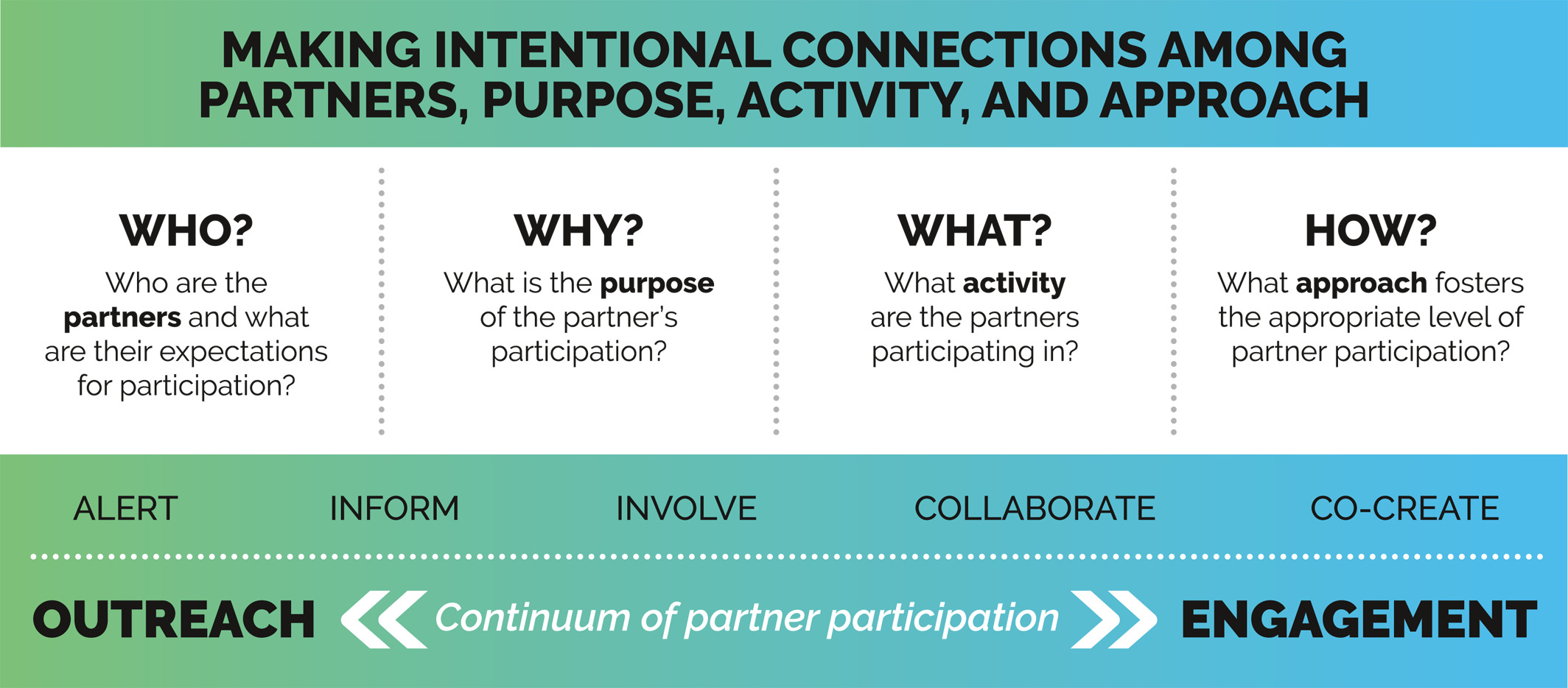Engaging communities or working in partnership with others?
Effective community engagement is needed for addressing human health outcomes, community resiliency, and sustainable use of the world’s oceans, lakes, and rivers.
Alignment among partners, purpose, activity, and approach is critical for effective engagement. What are the consequences of misalignment?
- Wasted time
- Wasted resources
- Erosion of interpersonal trust
- Erosion of public trust
- Failing to achieve goals or outcomes
Community-engagement scholars with the National Institute of Environmental Health and National Science Foundation funded U.S. Centers for Oceans and Human Health recently published an article entitled “A strategic framework for community engagement in Oceans and Human Health” in the journal Community Science.
The article defines four important dimensions and describes questions necessary to consider before and throughout engagement efforts. They are:
- Who? Who is your partner? What are their expectations?
- Why? What is the purpose of working with a partner? What are you trying to achieve together?
- What? What activities (e.g., research, inform policy or practice, formal or informal education, etc.) are you trying to do together?
- How? What kind of approach is appropriate (e.g., inform, collaborate, or co-create) for the activities you plan to do together?

Carson et al. 2022. modified from the International Association for Public Participation (IAP2) spectrum of public participation (International Association for Public Participation, 2018). See www.iap2.org and https://cdn.ymaws.com/www.iap2.org/resource/resmgr/pillars/Spectrum_8.5x11_Print.pdf
Effective community engagement is needed for addressing human health outcomes, community resiliency, and sustainable use of the world’s oceans, lakes, and rivers. For more information on the four Centers for Oceans and Human Health, please explore:
- Center for Oceans and Human Health and Climate Change Interactions
- Woods Hole Center for Oceans and Human Health
- Great Lakes Center for Fresh Waters and Human Health
- Greater Caribbean Center for Ciguatera Research
Michigan Sea Grant helps to foster economic growth and protect Michigan’s coastal, Great Lakes resources through education, research and outreach. A collaborative effort of the University of Michigan and Michigan State University and its MSU Extension, Michigan Sea Grant is part of the NOAA-National Sea Grant network of 34 university-based programs.
This article was prepared by Heather Triezenberg under award NA180AR4170102 from the National Oceanic and Atmospheric Administration, U.S. Department of Commerce through the Regents of the University of Michigan. The statements, findings, conclusions, and recommendations are those of the author(s) and do not necessarily reflect the views of the National Oceanic and Atmospheric Administration, the Department of Commerce, or the Regents of the University of Michigan. This work was partially supported by funding from the National Institute for Environmental Health (1P01ES028939-01) and the National Science Foundation (OCE-1840715) to the Bowling Green State University Great Lakes Center for Fresh Waters and Human Health.



 Print
Print Email
Email

